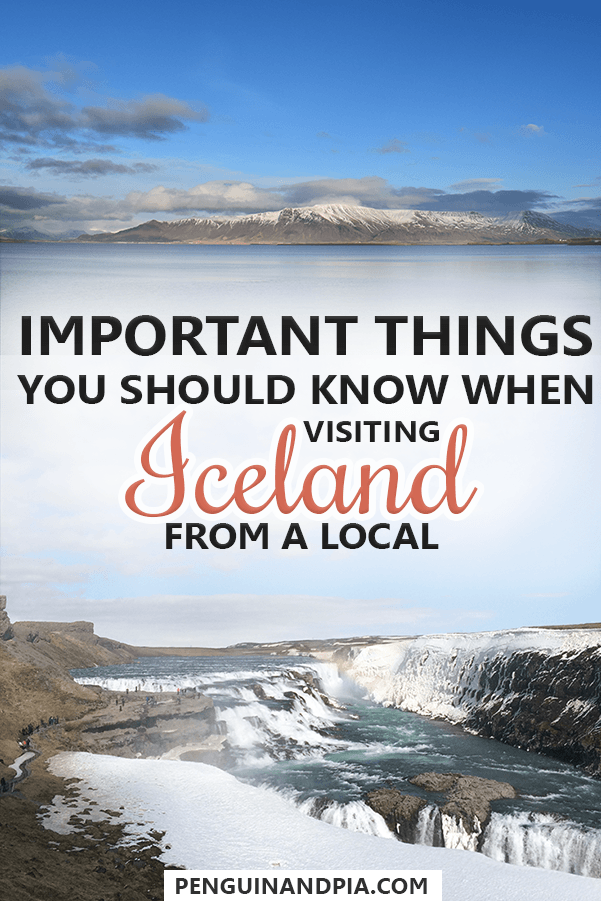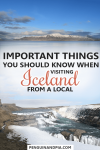Planning a Trip to Iceland? Our Local Connection Ari Tells You How To Be Responsible.
Whether it’s your first trip or it’s your fourth, visiting Iceland can be an exciting and enchanting experience.
From stunning landscapes to gorgeous waterfalls and the northern lights, it’s no wonder Iceland has become so popular.
While you can consult any Iceland travel guide for Iceland travel trips, we thought it might be useful to get a local to weigh in on the conversation!
Here at Penguin and Pia, we are particularly interested in responsible and respectful travel. Iceland provides a fascinating case study to see how exactly tourism can bring with it both positives and negatives.
That said, we’ve loved visiting Reykjavík in the wintertime, and Eric has noticed the changes over the years that he has travelled to Iceland.
So, to bring you the details, we teamed up with Kolbeinn “Ari” who is our good buddy and knowledgeable Icelandic local.
He shares with you tips and tricks for visiting Iceland and how to be a responsible tourist. In general, here’s our interview with Ari about how to prepare for Iceland!
Table of Contents
Meet an Icelander
Before we begin with the heavy topics of tourism in Iceland, we want you to understand who it is you’re talking to. So, please meet Ari!
Who are you and what do you do?
My name is Kolbeinn Ari. I’m a 25 year old Icelandic dude who is about to finish my Bachelors Degree in History! I work in social services at a youth club for teenagers and I also care for the elderly as a second job.
In the autumn, I begin teaching 5th grade which I’m very much looking forward to. I currently live with my girlfriend, a Canadian named Lea, who moved here almost two years ago and has been working at Icelandair!
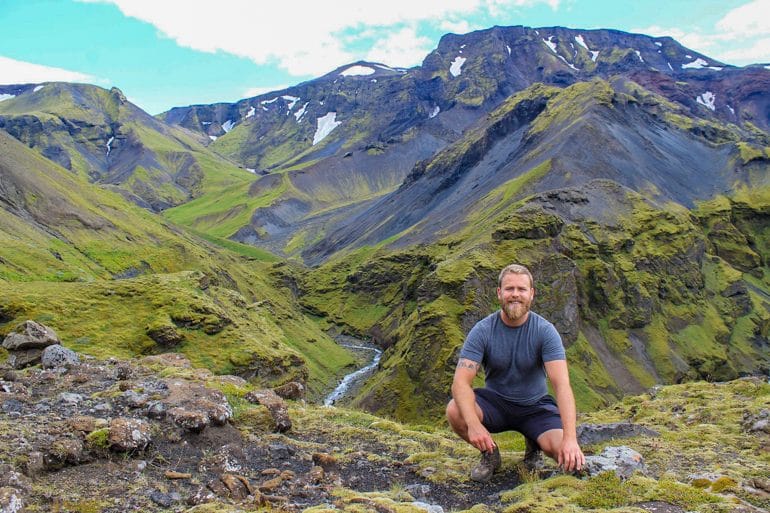
I’m born and raised in Iceland and have lived here almost all my life (excluding a year in Budapest and a summer in Vermont). In my spare time, I enjoy exercising, cycling, hiking.
In general, I’m like most Icelanders – I thoroughly enjoy the outdoors. I also love hitting the hot tubs at the local pools.
I love meeting new and interesting people and enjoy socializing, so I’ve definitely taken notice (more than most) of the changes happening in this tiny country.
Let’s make sure you really are Icelandic. Type a sentence and give us the translation!
Okay, you ready for this one?
Komiði margblessuð og sæl, ég heiti Kolbeinn og það var ég sem týndi Vaðlaheiðarvegavinnuverkfærageymsluskúrslyklakippuhringnum… afsakið það!
This sentence features “the longest word in Icelandic” and translates roughly as: “Greetings to all of you, my name is Kolbeinn and it was me who lost the Vaðlaheiði’s-road workers-tool work shed storage’s-keychain’s ring… excuse me!”
It’s kind of a made-up fairytale word, but it’s not really breaking any grammar rules. I think it shows how incredibly “scary” looking Icelandic can be but it also shows how you can be creative with the language and add words on words.
I find Icelandic to be a very fun language and I appreciate it being my mother language.
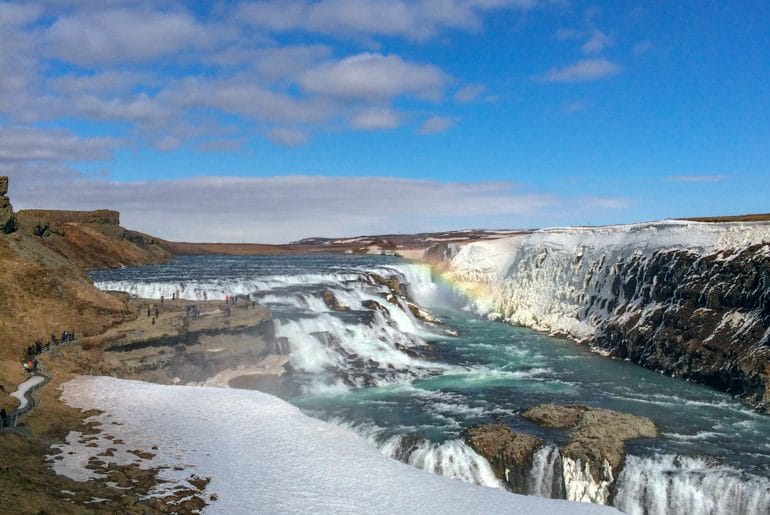
Icelandic is arguably the most conservative of all the Nordic languages (excluding Finnish, which has very different roots).
Icelandic has retained a remarkably original vocabulary inspired by Old Norse thanks to ambitious language preservation acts in the 19th century. I truly encourage everyone who moves here to learn it!
Read Next – The Perfect Europe Backpacking Trip – Full Itinerary
Tourism in Iceland – The Good, The Not-as-Good
It’s no secret that the tourism industry has boomed in recent years.
With the emergence of some airlines providing stopover options in Iceland, they have made it easier (both logistically and financially) for travellers to visit Iceland. Below, Ari shares his in-depth thoughts on tourism.
Here’s the “big one”. In general, how – in your opinion – has tourism changed the country over the past 10 years? Go for it, Ari.
Let’s go back a few years then because “tourism” didn’t happen overnight. In fact, it’s linked to the financial crisis in 2008. I remember after the devastating bank crisis here in Iceland, there was anger and hopelessness in the air.
It was around that time when a campaign called “Inspired by Iceland” started. It was a desperate marketing strategy with the intention to catch the interest of travelers.
The Volcano That Caught Everyone’s Attention
In 2010, Eyjafjallajökull (the volcano) erupted and spewed ash all over Europe. Remember that? It was at a time when our national spirit was at an all-time low.
We had been stamped as “dumb and greedy financial opportunists” by the world and now our active volcanoes had ruined people’s vacation plans.
Funny enough, the eruption turned out to be a major turning point for us. It actually seemed to act as successful free advertisement. People suddenly became aware of Iceland.
Suddenly people realized that there was a volcanic island in the middle of the North-Atlantic ocean ready to be explored.
I honestly think a lot of people weren’t aware of our existence before the eruption. I guess it proves that any publicity is good publicity.
Soon after Eyjafjallajökull had finished spewing ash, Iceland finally seemed to have put its name out there. It was then that I started to notice more and more tourists around me when I was walking around the city [Reykjavík].
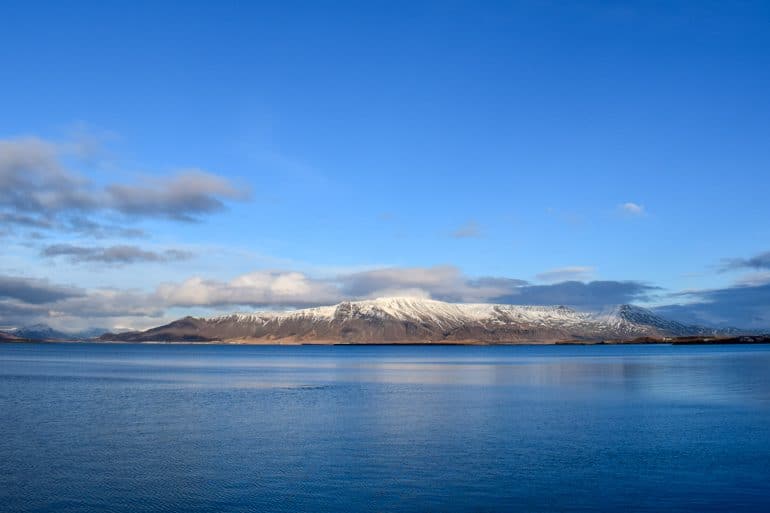
I think 2008-2012 was like the “golden age” for tourists to visit Iceland. The currency was still weak from the crisis and it was still not totally discovered by the general masses, yet.
Iceland was fresh, undiscovered, affordable, and authentic.
At that time, Icelanders were incredibly positive about the newcomers. We started to realize that our wild island had lots to offer travelers.
The Tourism Boom Begins
From 2013 onward, I think things started to take a direction that we didn’t see coming. Iceland was suddenly all over the internet and people were posting pictures on social media which pushed the craze even further.
The building cranes returned to Reykjavík and the city finally started growing again… but this time with more focus on building up hotels.
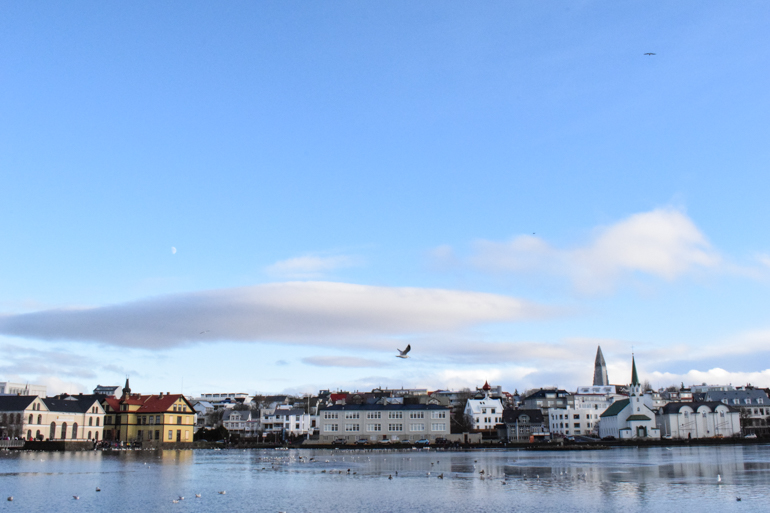
It was quite a difference for someone who grew up there to suddenly see so many new people walking on the streets.
New bars and restaurants started to pop up (and they still are), the stores downtown had long lines in them, and the traffic generally increased.
I must say I have very mixed feelings about this development. On the one hand, it was refreshing to see the economic wheels spin again.
On the other hand, it was strange to be surrounded by SO many strangers and to see so much focus on the tourists.
There were good sides, however. Reykjavík was livelier than ever.
My parents have told me how there was a serious lack of bars and restaurants in Reykjavík when they were young. Also, you have to know that beer was banned until 1989… so it wasn’t exactly a party town!
Today, there is a much larger variation of bars and restaurants and the downtown area is usually quite busy.
The economy is back on track and the country has, in many ways, made a remarkable financial recovery thanks to tourism and practical economic management. Having full control of the monetary policy turned out to be very handy – sorry, Greece.
Some towns in the countryside have also been growing thanks to tourism which has opened up new income possibilities.
In general, the standard of living has risen, there is more entertainment and food, and we get to see new faces.
The Negatives of Tourism
Well, I guess the most obvious thing is that Reykjavík and its surroundings are filled with tourists (it’s both good and bad).
The downtown area has been through drastic changes and now makes a big focus on serving tourists.
In general, prices have gone up and there has been a spike in real estate prices. I want people to understand that the economic growth along with wage growth and a stronger currency are all also contributing factors to prices going up.
However, Iceland was also very expensive before the bank crisis.
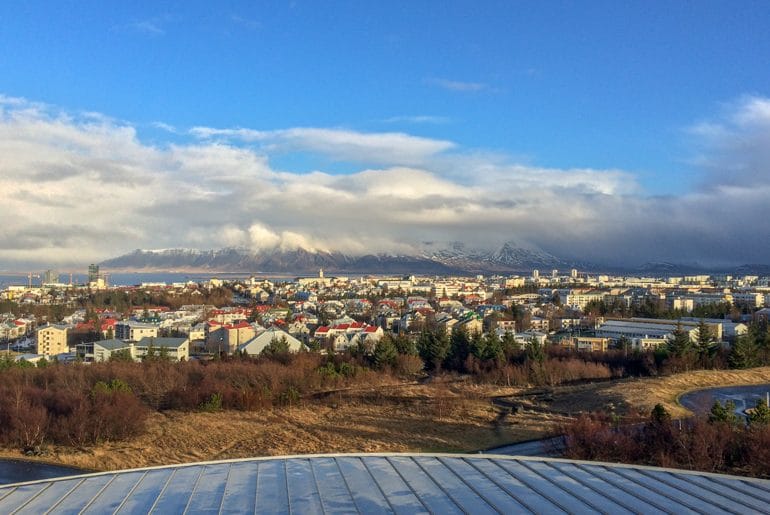
Locals have been competing with greedy Airbnb hosts for available apartments. The tourism boom has caused a real shortage of available real estate.
Having a bank crisis which shut down all construction for years ALSO did not help, though. I personally think the traffic is too concentrated around the capital area and that has led to problems.
Iceland needs to do more to spread visitors out to other corners of the island.
As for nature, this year the Environmental Agency of Iceland decided to close three popular areas temporarily just to allow the area to recover and so they could improve the walking paths.
Tourists are often caught doing something idiotic that is frowned upon or even straight-up illegal, like driving off-road on sensitive areas or ripping up mosses for tent insulation.
Tourists have even written stupid messages on moss-covered hills. The moss is incredibly sensitive and takes a very long time to grow back.
I can’t say that every Icelander is a “precious flower child”, but many of us grew up learning to have respect for nature and its great forces. I want to see respect from our visitors and I want to see more common sense from many tourists.
Read More – Which Nordic Country Has the Best Capital?
What are the biggest challenges you routinely encountered having lived in the capital, Reykjavík?
The biggest challenges are for sure seeing the real estate prices skyrocketing and seeing all those annoying puffin stores popping up all over the city centre! But seriously.
I also don’t like the number of hotels and generally the number of tourists around the capital area. But again, moving the visitors around well is something that Iceland can do a better job at tackling responsibly.

Sometimes, I like to escape from the central area of Reykjavík and go visit the thermal pools in the suburbs.
They are still pretty much the same and there I can find relief. (Eric can attest to this – Ari took him to some and it was downright heavenly…)
Iceland is dependent on nature. From your perspective, what effect is tourism having on the environment?
Nature is a resource and tourism is obviously putting a lot of strain on the environment. Having over 2 million travellers coming to visit who are thirsty for adventures will do that to a country, though.
For example, this year the government is taking action by adding more rangers to our national parks. I already mentioned Environmental Office closed off popular areas temporarily to allow them to recover from the constant human traffic.
Iceland is far north and that means the soil gets little time to flourish. This means it’s extra sensitive to groups of people wearing heavy boots.
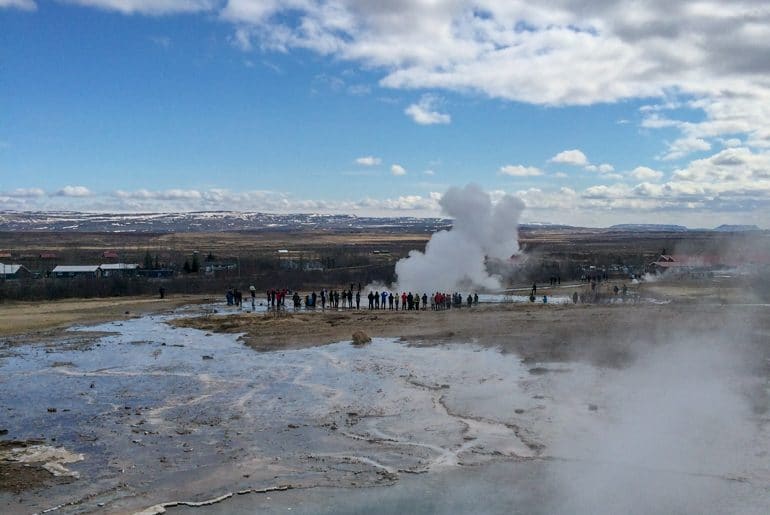
It’s also a little harder than before to find solitude. Before the tourism boom, Iceland was the perfect country for finding peace.
You could drive into the heaths by following adventurous mountain roads and explore the dramatic highlands. Nowadays, you have to know where to go to “escape” the hoards of photographers. Fortunately, we can still easily do that.
I’ll be honest, I’ll keep some of these places a secret for as long as I can. I think we need to keep some places a secret because one Instagram photo with a location tag can mark the end of a location as something you can enjoy in peace.
Travel Tips and Advice for Travellers to Iceland
We chatted with Ari about what he wants people to know if they are planning on travelling to Iceland. He had some super helpful tips and a lot of commonsense reminders!
If you could stand in the airport and personally chat with each person arriving – what are the key things you want them to know?
First of all, I would welcome them and thank them for visiting. I want everyone to be able to experience my country, but I also want them to know how to explore it.
I would inform them of some basics that will keep them out of trouble.
Off-Roading IS Illegal
If visitors intend to drive around the island, please stay on designated roads. Do not, in any case, drive off-road! It’s very illegal and is fined heavily.
It’s a good way to make everyone in Iceland loathe you and I’m very serious about that. Follow our laws and camp in designated campgrounds.
You can’t just park your car wherever you want and camp – and that’s been a problem with some tourists.
I want them to know how to explore [Iceland]
Respect Icelandic Nature
I would specifically inform visitors that our nature is sensitive and to make sure everyone can continue to enjoy it, we need to approach it with care and respect.
Here are a few quick and easy tips that seem like common sense but need to be stated:
- Don’t litter – use the bins provided or take trash with you
- Follow walking paths/trails
- Be careful around the ocean/waves
- Be VERY careful around high cliffs
- Don’t try to hike a glacier unprepared
- Poop in designated toilets (seriously)
Like I said, common sense really. Be mindful that Iceland is a society where people also live their everyday lives. You just have to be mindful and don’t do stuff that you wouldn’t want others to do in your country.
Those who arrive here with smiles on their faces and show interest in learning about us are generally going to enjoy it the most. Icelanders are a pretty open and friendly people and we like to share our country with others.
Iceland does boast some amazing landscapes that have not been touched by people in the same way as in other countries.
This is mainly due to its isolation, harsh environment, and small population. That’s the way I want to keep it and you should want that, too!
Bonus Question: What would you recommend first-time visitors see and how should they do it?
I would recommend them to rent a 4×4 car, a tent, and to use their imagination. There are many other places to visit than the ones you see everyone post on Instagram.
You don’t have to follow the crowd since you can also drive somewhere else and find enjoyable landscapes. Be a respectful visitor and camp like a champ!
Just remember: follow the roads, leave no trash, be prepared, and have a great time! Iceland is full of surprises and can give you a spectacular adventure experience.
I hope as many as possible will be able to continue to do that in their lifetime. Let’s keep it real!
And there you have it – the best local Icelandic knowledge we can bring to you! Hopefully, this helps you with planning a trip to Iceland but also makes you think about responsible tourism, travel, and your role in any country.
Iceland is a wonderful place that is to be cared for and enjoyed, and we thank Ari for taking the time to share his insight! What do you think? Have you been to Iceland before and have thoughts on the matter? Let us know by getting in touch!
As always, Happy Icelandic Waddlin’,
-L&E
Related Articles
If you’re looking for other posts about Iceland, you can find them here:
- Where To Stay in Reykjavik – An Accommodation Guide
- A One Day in Reykjavik Guide
- How to Get from Keflavik Airport to Reykjavik
- Going from Reykjavik to the Famous Blue Lagoon
- Explore the Famous Golden Circle on a Tour
Pin it for later!
